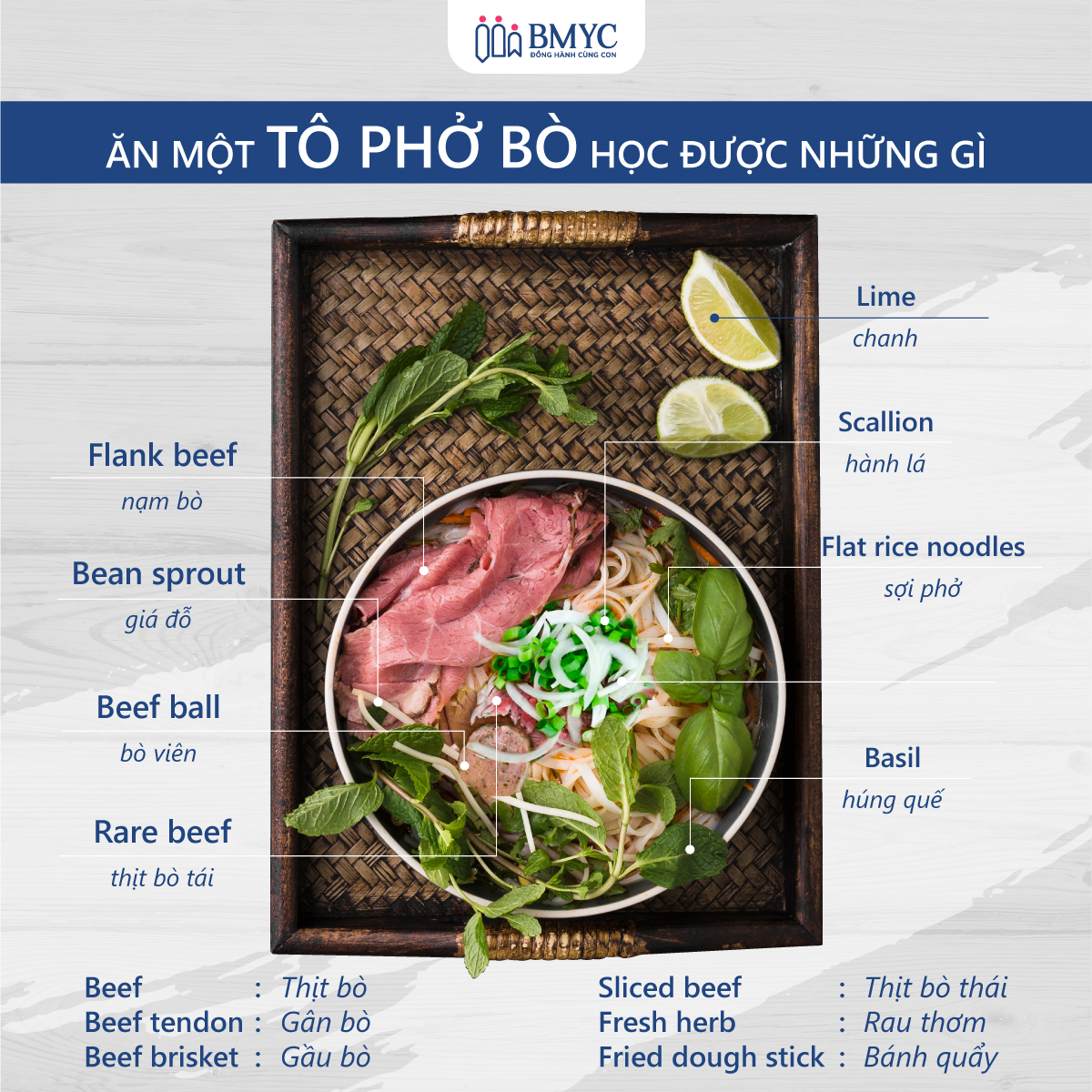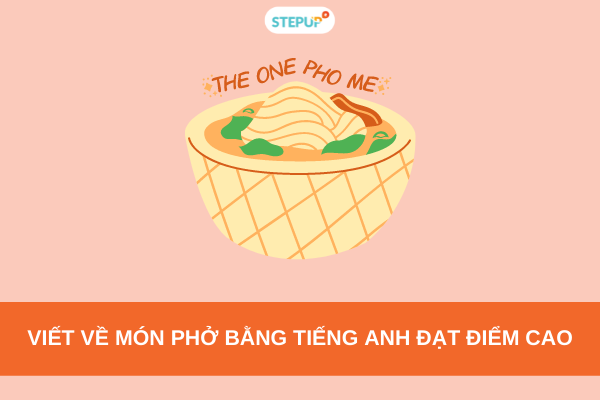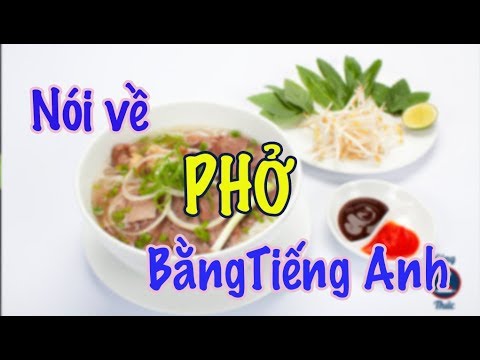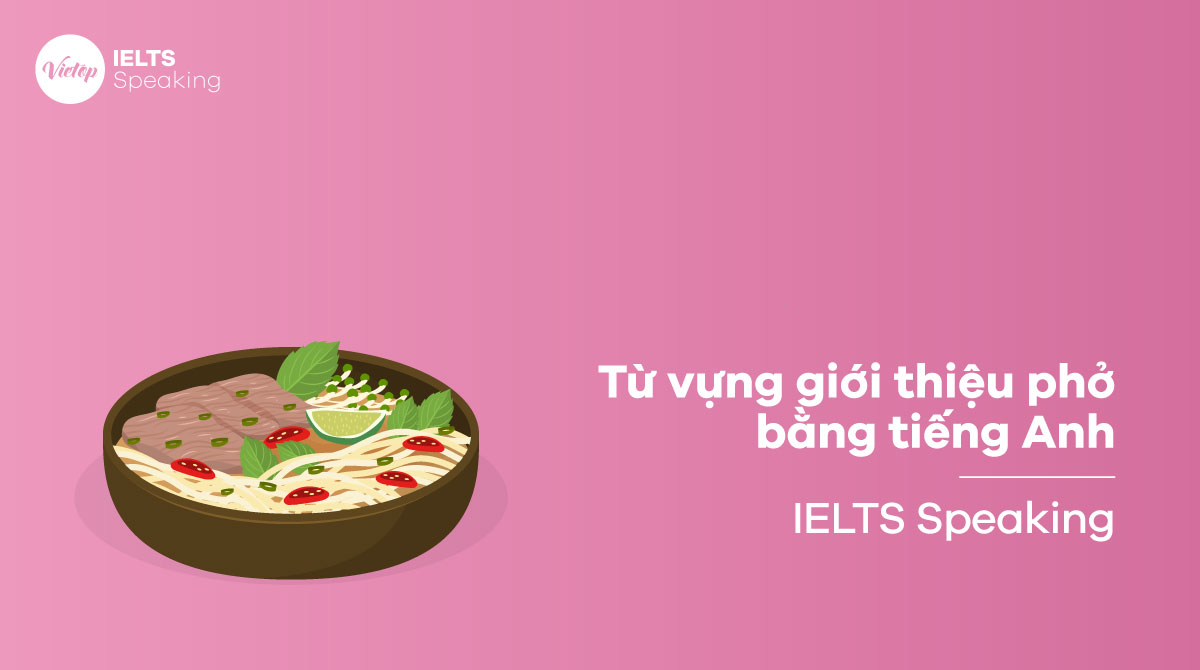Physical Address
304 North Cardinal St.
Dorchester Center, MA 02124
Physical Address
304 North Cardinal St.
Dorchester Center, MA 02124

Pho is one of the most famous traditional dishes of Vietnam, well-known both locally and internationally. This delicious noodle soup is loved for its rich flavors, fragrant broth, and fresh ingredients. Over time, pho has become a symbol of Vietnamese cuisine, representing the country’s culture and culinary art. Whether enjoyed for breakfast or any time of the day, pho offers a unique taste that attracts people of all ages. In this article, let’s explore the history, ingredients, and special features of pho in English.
Pho (Phở) is one of Vietnam’s most cherished dishes, and it’s a delightful representation of the country’s rich culinary heritage. This traditional Vietnamese noodle soup features flat rice noodles, a flavorful broth, and tender slices of meat, typically beef. The aroma of the broth, often simmered for hours with spices, is simply irresistible.
Among the various types of Pho, Beef Pho (Phở Bò) stands out for its rich taste and satisfying textures. A perfect bowl includes not just the noodles and broth, but also fresh herbs like basil and cilantro, a squeeze of lime, and sometimes a hint of chili for those who enjoy a little heat. The combination of flavors creates an unforgettable dining experience.
In Hanoi, the capital of Vietnam, you can find some of the most famous Pho stalls that serve this dish with its unique twist. Whether enjoyed for breakfast or any meal of the day, Pho is more than just food; it’s a heartwarming dish that brings people together. So, if you ever visit Vietnam, don’t miss the chance to savor a steaming bowl of Pho!

The history of phở, a beloved Vietnamese dish, traces back to the late 19th century during the height of French colonialism in Vietnam. As the French demand for beef increased, many Vietnamese began to experiment with this ingredient, giving birth to a unique noodle soup that would eventually capture the hearts of many.
Pho, pronounced “phở,” features flat rice noodles (bánh phở), a savory broth, and tender slices of meat, typically beef or chicken. It is often garnished with fresh herbs like scallions, cilantro, and onions, which add vibrant flavors to the dish. The earliest English-language mention of pho appeared in the book *Recipes of All Nations* in 1935, highlighting the dish’s growing popularity beyond Vietnam.
Originating near Hanoi, phở was once a simple street food, enjoyed by locals before evolving into a symbol of Vietnamese cuisine. Today, pho is not just a meal; it’s an experience, as each bowl offers a delightful blend of taste and texture, inviting everyone to join in its rich culinary tradition.

Pho is more than just a dish; it’s a symbol of Vietnamese culture and history. Its origins trace back to the late 19th century during the height of French colonialism, where the demand for beef led to its prevalent use in Vietnam. The evolution of pho began from a humble dish called xáo trâu, which featured stewed buffalo meat and rice noodles.
Today, pho is celebrated for its comforting and aromatic qualities. Traditionally, it consists of flat rice noodles known as bánh phở, a flavorful broth, and tender meat—most commonly beef (phở bò) or chicken (phở gà). Topped with fresh herbs like scallions and cilantro, each bowl offers a delightful combination of textures and tastes.
Originating from Nam Dinh, pho has transformed over the years, reflecting the fusion of culinary influences and local ingredients. Whether enjoyed as a breakfast staple or a hearty meal at any time of the day, pho resonates deeply with the heart and palate of Vietnam, making it a cherished dish worldwide.

Phở is more than just a dish; it’s an integral part of Vietnamese culture and identity. Its origins trace back to the end of the 19th century during the height of French colonialism when the demand for beef increased in Vietnam. This shift led to the creation of a delightful soup that we now know as phở, featuring a savory broth, flat rice noodles (bánh phở), and tender meat, most commonly beef or chicken.
Initially sold by street vendors called “gánh phở,” this noodle soup became an essential street food, embodying the vibrant spirit of bustling Vietnamese life. Those early vendors carried their portable kitchens, allowing them to serve piping hot bowls of phở to eager customers, creating a unique communal dining experience.
The dish is typically garnished with fresh herbs, bean sprouts, and a squeeze of lime, enhancing its flavorful profile. Whether enjoyed for breakfast, lunch, or dinner, phở remains one of Vietnam’s beloved culinary treasures, inviting people to savor its rich history and comforting taste in each delicious bowl.

Phở bò, or beef pho, is an iconic Vietnamese noodle soup that many people around the world have come to love. What makes phở so special is its rich and savory broth, which is often simmered for hours to develop deep flavors. The dish typically features flat rice noodles (bánh phở) and various toppings, with thinly sliced beef being the most popular choice.
The history of phở dates back to the end of the 19th century, during the height of French colonialism in Vietnam. The French demand for beef led to its increased availability, paving the way for this delicious dish to emerge. Today, phở is celebrated not only in Vietnam but around the globe, with variations like phở gà, which uses chicken instead of beef.
Making phở at home is a delightful experience. The process starts by simmering beef bones with fragrant spices, creating a broth that is both aromatic and comforting. Once the noodles are cooked, it’s all about adding fresh herbs like cilantro and scallions, along with bean sprouts for added crunch. The beauty of phở lies in its ability to adapt to personal tastes, making each bowl a unique experience.

Pho, or “Phở” in Vietnamese, is a delicious noodle soup that has captured the hearts of many around the world. This beloved dish typically consists of a steaming bowl of rich beef broth, tender rice noodles known as bánh phở, and an array of succulent meats, most commonly beef (phở bò), but sometimes chicken (phở gà) as well.
What makes pho truly special is its fragrant and flavorful broth, simmered for hours to develop a depth of taste that is both comforting and enticing. As you take your first sip, you’ll notice the perfect balance of spices like star anise, cinnamon, and ginger, all harmonizing beautifully with the beef flavors.
To make it even more delightful, pho is garnished with fresh herbs such as cilantro, green onions, and bean sprouts, adding a crunchy texture and vibrant taste. Each bowl is a canvas for personalization, allowing you to add lime juice or chili for an extra zing. The experience of enjoying pho is not just about the food; it’s about the warmth and comfort it brings to those who savor it.

Pho, pronounced “fuh,” is a cherished Vietnamese noodle soup that has become symbolic of the country’s rich culinary heritage. Its history dates back to the late 19th century during French colonialism, a time when beef became more accessible in Vietnam. This shift played a crucial role in shaping the dish we know today.
At its core, pho consists of flat rice noodles (bánh phở), a flavorful, aromatic broth, and tender meat—usually beef (phở bò) or chicken (phở gà). The bowl is often garnished with fresh herbs like cilantro, scallions, and basil, adding vibrant flavors and textures. Pho originated in Nam Dinh and is said to have evolved from a simpler dish made with stewed buffalo meat.
Traditionally, Vietnamese cuisine prior to this period favored pork, poultry, and seafood. The introduction of beef transformed local flavors, paving the way for the beloved pho. Today, it is enjoyed by people worldwide and is a staple in Vietnamese households, representing the heart and soul of Vietnamese food culture.

Pho, or “phở” in Vietnamese, is a cherished noodle soup that has become a symbol of Vietnamese cuisine. Its origins trace back to the late 19th century during French colonialism when the increased demand for beef helped shape this iconic dish. Composed of flat rice noodles (bánh phở), savory broth, and a mix of herbs, pho typically features tender beef (phở bò) or chicken (phở gà).
In 1930, pho was officially defined in a Vietnamese dictionary, marking its place in culinary history. The dish is closely tied to Vietnam’s agricultural heritage, having evolved from a simple meal of stewed buffalo meat served with rice noodles, known as xáo trâu. This evolution has led to the rich, aromatic soup we enjoy today.
Pho’s unique combination of flavors comes from the delicate herbs like scallions, cilantro, and onion that enliven the dish. Loved by many worldwide, pho is more than just a meal; it’s a cultural experience that connects people across continents, celebrating both tradition and taste.

In conclusion, pho is not just a dish; it is a cultural emblem that embodies the rich history and traditions of Vietnam. With its unique combination of flavors, aromatic herbs, and fresh ingredients, pho offers a delightful culinary experience that has gained global popularity. Whether enjoyed in a bustling Hanoi street or a cozy restaurant abroad, this savory noodle soup brings people together and showcases the essence of Vietnamese gastronomy. As more people discover pho, its legacy continues to thrive, making it a must-try dish for anyone exploring the diverse world of international cuisine.